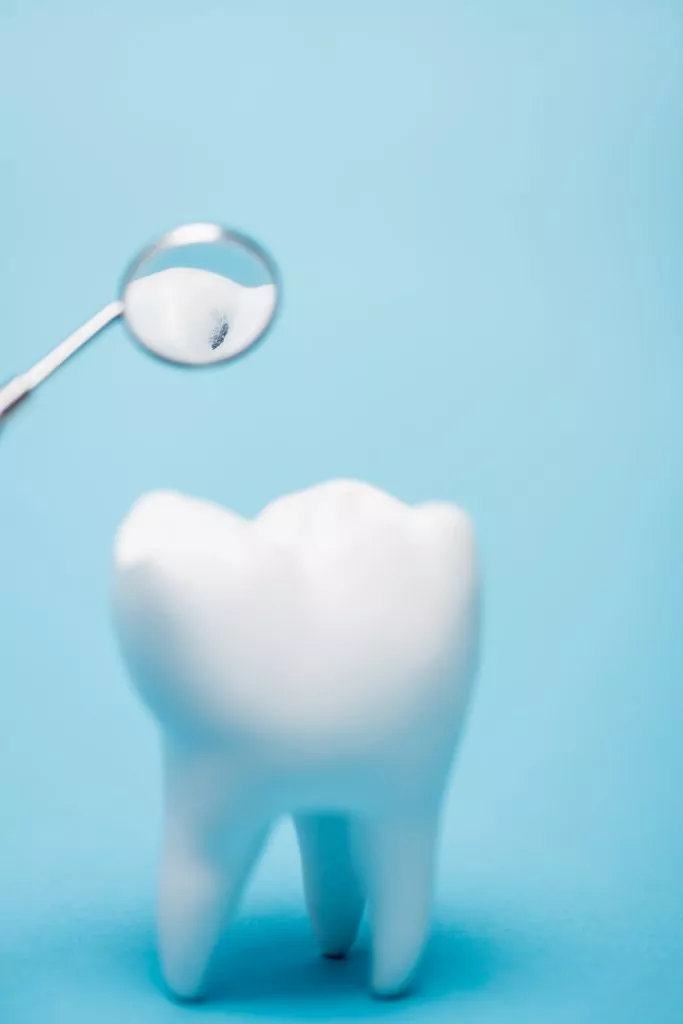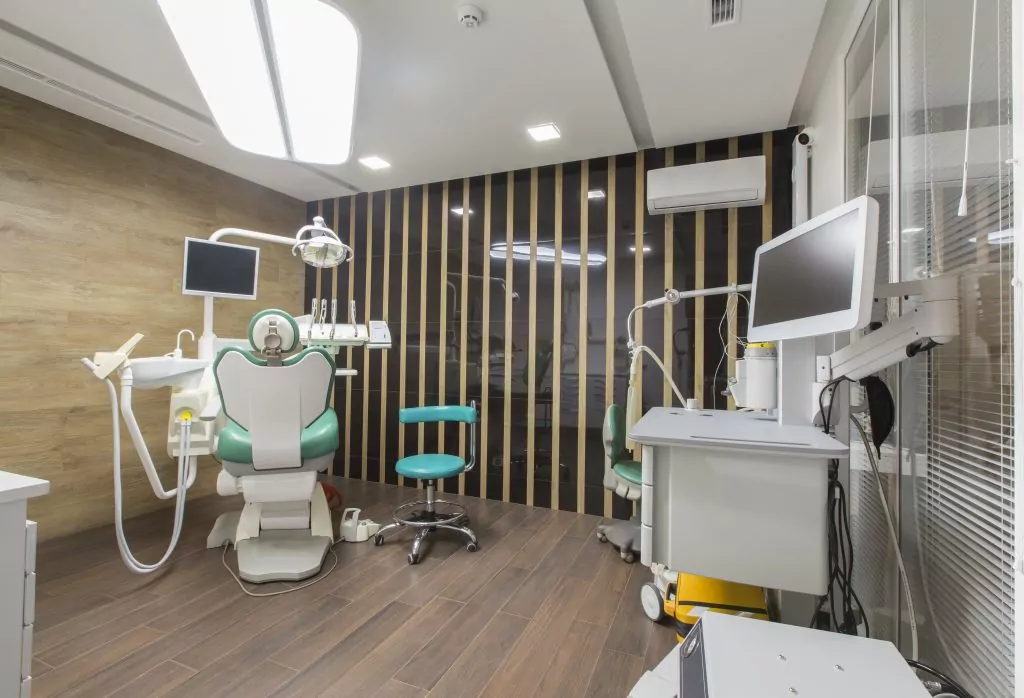Cracked tooth syndrome is a common dental condition that affects a significant number of people worldwide. Unfortunately, this condition can be challenging to diagnose accurately, leading to misdiagnosis and inappropriate treatment. Therefore, understanding cracked tooth syndrome and its diagnosis is critical to managing this condition effectively.
In this article, we will explore the different aspects of cracked tooth syndrome diagnosis, including the causes, symptoms, and available treatment options. Additionally, we will highlight the importance of early detection and accurate diagnosis in preventing further dental damage.
Key Takeaways:
- Cracked tooth syndrome is a prevalent dental condition that can be challenging to diagnose.
- Early detection and accurate diagnosis are essential in preventing further dental damage.
- Understanding the symptoms and types of cracks associated with this condition is crucial in identifying cracked tooth syndrome.
- Advanced diagnostic techniques aid in accurately diagnosing cracked tooth syndrome.
- Proper treatment options, precautions, and long-term care are necessary to manage cracked tooth syndrome effectively.
What is Cracked Tooth Syndrome?

Cracked Tooth Syndrome is a dental condition where a tooth has a crack that is too small to be visible to the naked eye, but significant enough to cause discomfort and pain. It is also known as an “invisible” or “occult” crack, as patients usually do not realize the presence of a crack until it starts causing symptoms.
The condition can affect any tooth, but it is most commonly seen in molars. The crack can result from several reasons, including teeth grinding, trauma, biting down on hard objects, or exposure to extreme temperatures. A cracked tooth can eventually lead to more severe dental problems, including gum disease and tooth decay, making early detection vital.
Did You Know? Cracked Tooth Syndrome is a widespread dental problem, affecting as many as 1 in 10 adults, with the highest prevalence among middle-aged individuals.
Recognizing the Symptoms
Cracked tooth syndrome is often challenging to diagnose accurately, mainly because its symptoms can vary depending on the location and severity of the crack. Patients with this condition may experience one or several of the following symptoms:
- Tooth sensitivity: This is the most common symptom of cracked tooth syndrome. The affected tooth may feel sensitive to hot and cold temperatures, sweet or sour foods, and even air movement.
- Pain while chewing: Patients with cracked tooth syndrome may feel sharp pain or discomfort while chewing or eating. This pain may be dull or intense, depending on the extent of the crack.
- Sudden discomfort: Patients may experience sudden or sporadic discomfort, often without any apparent cause or trigger. This discomfort may be fleeting or persistent, depending on the severity of the crack.
- Visible crack: In some cases, patients may be able to see the crack on their tooth surface. These cracks may be visible as hairline fractures or as significant splits that extend from the tooth’s surface to its root.
If you experience any of the above symptoms, it’s essential to seek prompt dental care. Ignoring these symptoms can lead to further damage and complications, such as bacterial infection or tooth decay.
Types of Cracks:
Cracked tooth syndrome is caused by various types of cracks that can affect the teeth. Understanding the different types of cracks is essential for diagnosing this condition accurately. The following are the four main types of cracks:
| Type of Crack | Description |
|---|---|
| Craze lines | Superficial cracks that only affect the outer enamel. They are common in adults and do not require treatment. |
| Fractured cusp | Occurs when a part of the tooth’s chewing surface breaks off. It usually does not affect the pulp and can be treated with a dental crown. |
| Cracked tooth | A crack that extends from the chewing surface towards the root of the tooth. It can lead to sensitivity and discomfort while chewing and requires prompt treatment. |
| Split tooth | Occurs when a cracked tooth is left untreated, and the crack extends towards the root, splitting the tooth into two or more segments. It often requires extraction. |

Identifying and diagnosing cracked tooth syndrome requires careful evaluation of the type and extent of the crack. It is essential to visit a dentist promptly if you experience any of the symptoms mentioned earlier to prevent further damage and ensure appropriate treatment.
The Diagnostic Process

Accurately diagnosing cracked tooth syndrome is crucial for determining suitable treatment options. Dentists use various diagnostic techniques to identify the presence of a cracked tooth.
Dental Examination
During a dental examination, the dentist inspects the tooth and surrounding gum tissue to look for signs of cracks. The dentist may use a dental explorer, which is a small, pointed instrument, to evaluate the tooth’s surface for any abnormalities.
X-Rays
Dental X-rays are an essential component of diagnosing cracked tooth syndrome. They can reveal the extent and location of the crack, allowing the dentist to determine the necessary treatment. The dentist may use a variety of X-rays, including periapical and bitewing X-rays.
Bite Test
The dentist may perform a bite test to help identify the cracked tooth’s location. During this test, the patient will bite down on a special tool, and the dentist will evaluate the patient’s bite.
Transillumination
Transillumination is a diagnostic technique that involves shining a bright light through the tooth. If there is a crack, the light will shine through the crack, indicating its presence.
Dye Application
Another diagnostic technique is applying a dye to the tooth. The dye seeps into the crack, making it more visible on X-rays or direct observation.
Combining these diagnostic techniques ensures an accurate diagnosis of cracked tooth syndrome. Prompt and precise diagnosis is crucial in preventing further damage and complications.
Common Misdiagnosis Challenges

Cracked tooth syndrome is a perplexing dental condition that can be challenging to diagnose accurately. Unfortunately, this deficiency can lead to misdiagnosis and inappropriate treatment, causing further damage to the affected tooth.
Dentists often face difficulties in identifying cracked tooth syndrome due to the vagueness of its symptoms. Patients may experience tooth sensitivity, discomfort, or pain while chewing, which could indicate various other dental conditions such as cavities, bruxism, or gum disease.
Misdiagnosis can also result from inadequate diagnostic tools and improper evaluation, leading to improper treatment. It is essential to understand the common misdiagnosis challenges to avoid compromising patient outcomes.
The lack of awareness of this condition among patients and the tendency to ignore warning signs can also lead to misdiagnosis. In such cases, patients may not seek proper dental attention, allowing the condition to worsen and become more challenging to treat.
However, research and innovation in dental diagnosis have enabled dentists to overcome these challenges. By being mindful of these common pitfalls, and seeking advanced diagnostic techniques, dentists can make informed and accurate diagnoses, resulting in better patient outcomes.
Advanced Diagnostic Techniques for Cracked Tooth Syndrome

Diagnosing cracked tooth syndrome accurately can be challenging, requiring dentists to utilize advanced diagnostic techniques in addition to traditional methods. To confirm the presence of a cracked tooth, dentists may use one or more of the following techniques:
| Diagnostic Technique | Description |
|---|---|
| Transillumination | This technique involves shining a light through the tooth to reveal any cracks or fractures that may be present. It is particularly useful for identifying craze lines, which are often too small to be visible to the naked eye. |
| Dye Application | A special dye is applied to the tooth, which seeps into any cracks or fractures, making them more visible. This technique is useful for identifying cracks that may be difficult to see on X-rays. |
| Bite Test | A dentist may ask the patient to bite down on a special device to identify any pain or discomfort that may indicate the presence of a cracked tooth. |
In addition to these techniques, dentists may also use microscopes or other specialized equipment to examine teeth more closely and identify any cracks or fractures that may have gone undetected. By using these advanced diagnostic techniques, dentists can accurately diagnose cracked tooth syndrome and provide patients with appropriate treatment options.
Remember, early detection is crucial for preventing further damage and ensuring successful treatment. If you are experiencing any symptoms of cracked tooth syndrome, don’t hesitate to schedule an appointment with your dentist.
Treatment Options for Cracked Tooth Syndrome

Once a cracked tooth syndrome has been diagnosed, several treatment options exist. The choice of treatment depends on the severity of the crack and its location, along with the patient’s overall dental health.
Dental Bonding: For minor cracks, dental bonding may be an effective option. The procedure involves applying a tooth-colored resin to the damaged area, which is then hardened using a special light. The bonding helps restore the tooth’s natural appearance while preventing further damage.
Dental Crown: A dental crown may be recommended for more severe cracks that have affected a larger area of the tooth. The crown is a cap that covers the cracked tooth, protecting it from further damage while restoring its function and appearance.
| Treatment Option | Description |
|---|---|
| Root Canal Therapy: | If the crack has reached the inner pulp of the tooth, root canal therapy may be necessary. During this procedure, the damaged pulp is removed, and the tooth is filled and sealed, preventing further infection or decay. |
| Extraction: | If the crack is extensive, and the tooth is severely damaged or cannot be saved, extraction may be the only option. In such cases, a dental implant, bridge, or partial denture may be recommended to replace the extracted tooth. |
It is essential to follow the dentist’s recommendations precisely regarding the choice of treatment. Neglecting to do so can lead to further complications and damage to the tooth.
After undergoing treatment for cracked tooth syndrome, regular dental check-ups are essential to ensure the tooth remains healthy and free of infection or decay. The dentist may recommend additional precautions, such as avoiding hard or crunchy foods or wearing a mouthguard when participating in sports or other high-impact activities.
Overall, early diagnosis and prompt treatment of cracked tooth syndrome are crucial in maintaining good oral health and preventing further damage.
Precautions and Preventive Measures
Preventing cracked tooth syndrome is always better than treating it. Here are some preventive measures that individuals can take to reduce the risk of developing this condition:
- Regular Dental Check-ups: Regular visits to the dentist can help identify potential cracks or other dental issues before they develop into more significant problems.
- Avoid Teeth-grinding Habits: Teeth-grinding, also known as bruxism, can cause significant damage to tooth enamel and increase the risk of developing a cracked tooth. If you have this habit, seek professional help to address it.
- Use of Protective Mouthguards: For individuals who engage in activities that may lead to dental trauma, such as sports, using a mouthguard is highly beneficial. It provides an additional layer of protection, reducing the risk of tooth damage.
- Maintaining Good Oral Hygiene: Brushing twice daily, flossing, and rinsing with mouthwash are essential in maintaining good oral hygiene. This reduces the risk of tooth decay and gum disease, which can weaken the tooth structure and increase the risk of a cracked tooth.
Taking the above preventive measures can help ensure healthy teeth and prevent cracked tooth syndrome. Additionally, individuals who experience any symptoms or notice changes in their teeth should consult a dentist immediately.
Long-Term Care and Prognosis
After undergoing treatment for cracked tooth syndrome, it is essential to maintain proper oral hygiene and follow specific precautions to prevent further damage to the affected tooth.
Long-term care involves regular dental check-ups and cleanings, which help detect any signs of decay or infection in the tooth. It also includes avoiding hard or crunchy foods that may cause the tooth to crack further. By taking these precautions, patients can maintain optimal oral health and prevent the need for further treatment.
| Treatment Option | Success Rate | Long-Term Prognosis |
|---|---|---|
| Dental Bonding | 80-90% | 5-8 years |
| Dental Crown Placement | 90-95% | 10-15 years |
| Root Canal Therapy | 85-95% | Lifelong with proper care |
| Tooth Extraction | N/A | N/A |
The success rate and long-term prognosis vary depending on the treatment option chosen. Dental bonding has a success rate of 80-90%, with a lifespan of 5-8 years. Dental crown placement has a higher success rate of 90-95% and lasts for 10-15 years. Root canal therapy has a success rate of 85-95% and can last a lifetime with proper oral care. Tooth extraction is typically a last resort and does not have a long-term prognosis as it requires a replacement tooth.
Overall, the key to long-term care and prognosis for cracked tooth syndrome is early detection, accurate diagnosis, and appropriate treatment. Patients who take proper precautions and maintain excellent oral hygiene can prevent further damage and enjoy optimal oral health.
Conclusion
Cracked tooth syndrome can be a complicated condition to diagnose. However, with the right knowledge and diagnostic tools, dentists can provide accurate diagnoses and appropriate treatments for patients. By recognizing the symptoms and understanding the various types of cracks, dentists can identify and treat cracked tooth syndrome effectively.
Advanced diagnostic techniques, such as transillumination and dye application, can aid in the accurate diagnosis of this condition. Moreover, regular dental check-ups, avoiding teeth-grinding habits, and maintaining good oral hygiene can help prevent cracked tooth syndrome from occurring.
After undergoing treatment for cracked tooth syndrome, ongoing care is essential. Patients must maintain good oral hygiene, follow a healthy diet, and attend regular dental appointments to prevent any further complications. With proper care and attention, the prognosis of cracked tooth syndrome is generally positive.
In conclusion, accurate diagnosis is crucial for treating cracked tooth syndrome. Dentists must remain aware of the common misdiagnosis challenges and employ advanced diagnostic techniques to identify this condition accurately. By taking preventive measures and undergoing appropriate treatment, patients can maintain optimal oral health and prevent further complications.
FAQ
What is cracked tooth syndrome?
Cracked tooth syndrome is a dental condition characterized by a cracked tooth that may cause pain or discomfort.
How does cracked tooth syndrome differ from other dental conditions?
Cracked tooth syndrome is unique because the crack in the tooth is often invisible and can be challenging to diagnose.
What are the common symptoms of cracked tooth syndrome?
Common symptoms include tooth sensitivity, pain while chewing, and sudden discomfort.
What are the different types of cracks that can occur within the teeth?
The different types of cracks include craze lines, fractures, and split tooth.
How is cracked tooth syndrome diagnosed?
Cracked tooth syndrome is diagnosed through a thorough dental examination, X-rays, and other diagnostic tools.
Why is cracked tooth syndrome often misdiagnosed?
Cracked tooth syndrome can be challenging to diagnose accurately, leading to misdiagnosis in some cases.
What advanced diagnostic techniques are used to identify cracked tooth syndrome?
Advanced diagnostic techniques such as transillumination and dye application are employed to accurately diagnose cracked tooth syndrome.
What are the available treatment options for cracked tooth syndrome?
Treatment options include dental bonding, crown placement, root canal therapy, and tooth extraction.
How can cracked tooth syndrome be prevented?
Preventive measures include regular dental check-ups, avoiding teeth-grinding habits, and maintaining good oral hygiene.
What is the long-term care and prognosis for cracked tooth syndrome?
After treatment, ongoing care is vital, and complications can arise. Dentists can provide tips and recommendations for long-term care and discuss the prognosis of cracked tooth syndrome.







